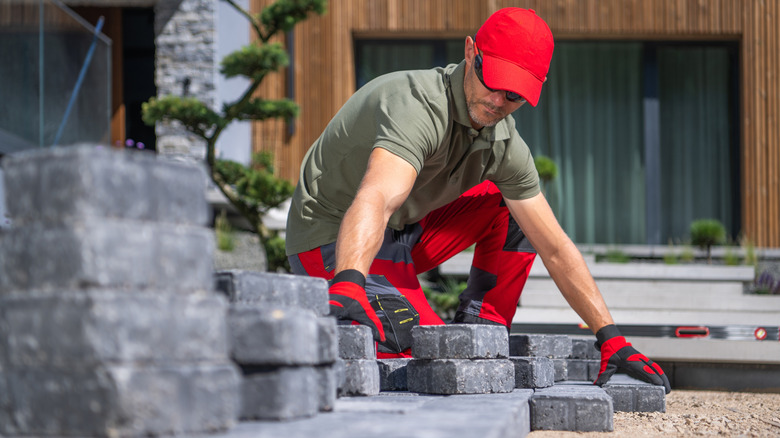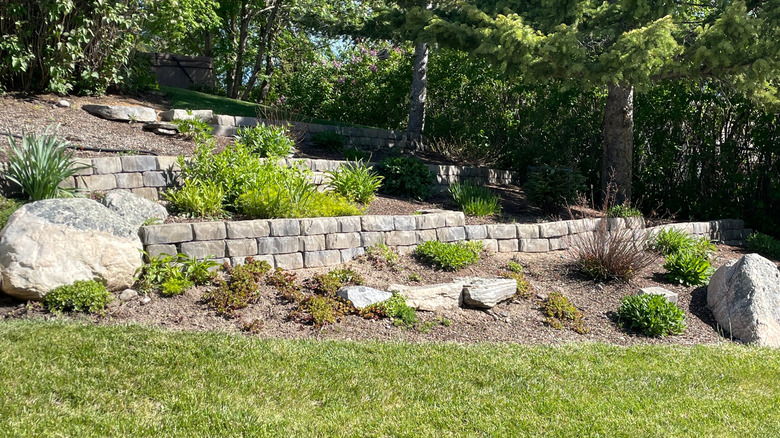Use Pavers To Create A Unique Garden Wall To Add Extra Privacy To Your Yard
What comes to mind when you think of a walled garden? Maybe you imagine the Irish countryside, with dry, stacked stone walls stretching for miles. Or perhaps you fondly recall "The Secret Garden," a classic children's book that combines a coming-of-age tale with universal truths about nature's ability to heal. Whether you want an enclosed paradise for contemplation or just need to block the view of your backyard from the neighbors, using pavers to create a unique garden wall can add extra privacy to your yard.
After determining the exact length and position of your wall, and choosing the right type of pavers for your project, you'll need to prepare the site. A standard privacy fence stands at 6 feet tall. To build a paver wall of similar height, dig a trench that is at least 2 feet deep and firmly compacted with a layer of gravel. If desired, you can use concrete and rebar in the trench instead. Either way, your foundation should be below the frost line to avoid pavers shifting as the ground freezes in winter and thaws in spring.
You should then add footings that are larger than the paver stones you intend to stack, to maximize wall strength as you begin to build. Cinder blocks secured with mortar provide the most stability. For added support as height increases, your wall should be widest at the bottom and get narrower at the top to help it stay structurally sound.
Keeping your pavers level is important
Along with pavers and an aggregate base, to build a garden wall, you will need a tape measure, a large level, a square, mallets, and safety gear. Depending on the style of pavers selected for your project, you may also choose to use construction adhesive or mortar for additional security. This is an especially important consideration if you decide to use a variety of paver shapes in order to make your wall unique.
One of the most important steps in building your wall is to make sure each layer of pavers is completely level. A carpenter's or mason's level is best for checking across several blocks, whereas a smaller torpedo level is best for checking each block from the front to the back of each paver. For long walls, it may be helpful to set a level line. You can gently tap pavers into place with a rubber mallet as needed.
If you plan to add a retaining wall on a sloped backyard, the pavers must slightly slope away from your home's foundation to avoid drainage issues as well as settling that can cause the pavers to loosen or even come out of the wall entirely. Working with the natural elevation changes in your yard to create shorter walls on various tiers is an excellent way to add both interest and privacy, especially if the idea of building a 6-foot wall seems overwhelming.

